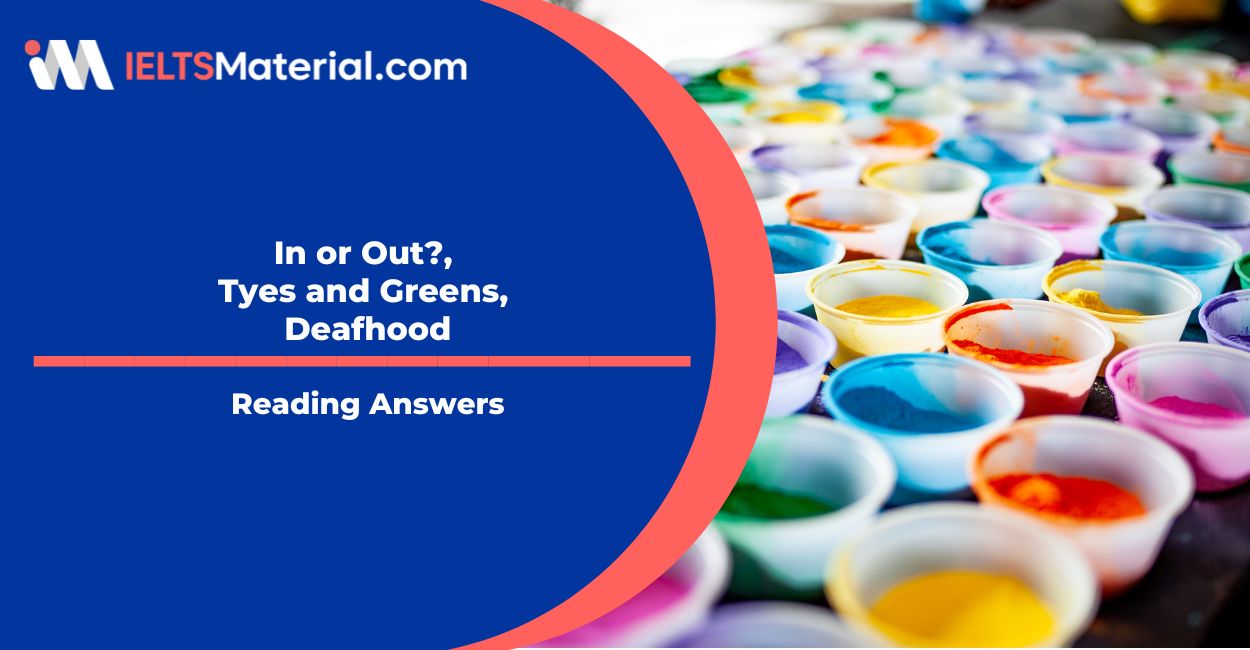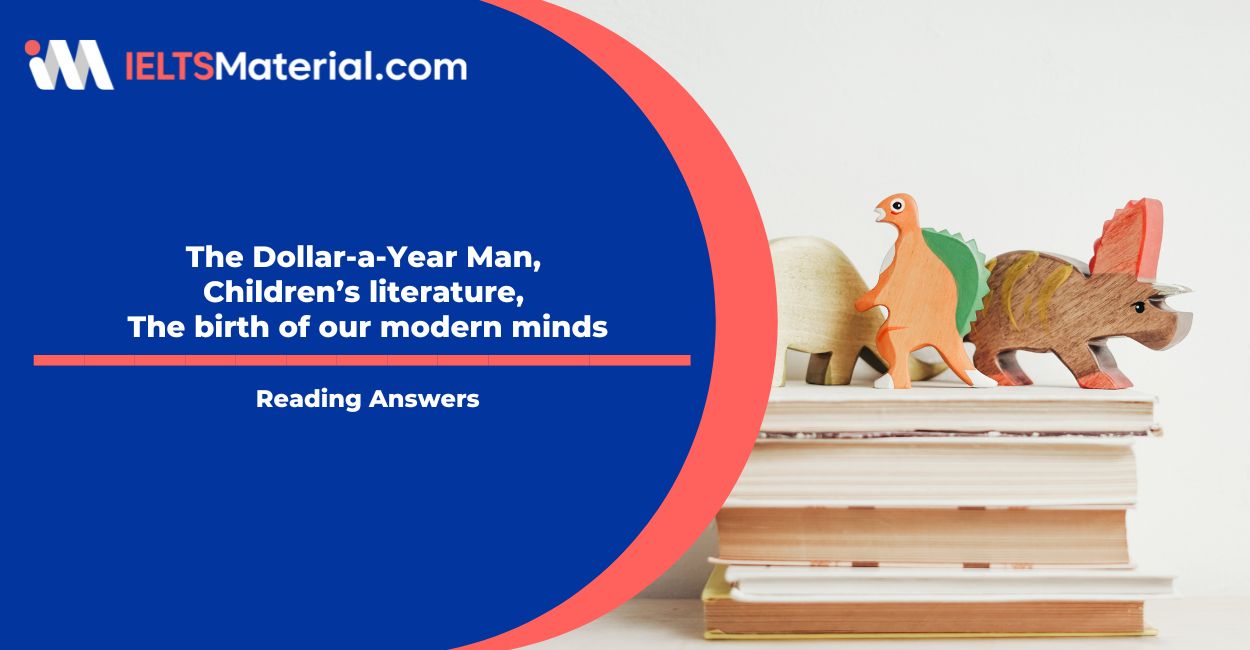Communicating in Colour, The Pursuit of Happiness, The Deep Sea Reading Answers
6 min read
Updated On
-
Copy link
Table of Contents

Limited-Time Offer : Access a FREE 10-Day IELTS Study Plan!
The IELTS Reading passage, Communicating in Colour, along with the other two Academic passages – The Pursuit of Happiness and The Deep Sea, make this a complete IELTS Reading practice test.
Here are the question types in this reading test:
Reading Passage 1 (Communicating in Colour)
Reading Passage 2 ( The Pursuit of Happiness)
Reading Passage 3 (The Deep Sea)
You will have 60 minutes to complete the whole test, which consists of 40 questions in total. Set your timer and take the test now!
Reading Passage 1
Communicating In Colour
You should spend about 20 minutes on Questions 1-13, which are based on the Reading Passage below.
Find the practice test with the Communicating In Colour PDF here.
Questions 1-4
Answer the questions below.
Choose NO MORE THAN THREE WORDS from the passage for each answer.
Write your answers in blank spaces 1-4 on your answer sheet.
1 What kind of climate do most chameleons live in? ……………………….
2 Which animal caught a chameleon from an undiscovered species? ……………………..
3 What was the new species named after? …………………………
4 Which part of the body is unique to the species Kinyongia Magombera? ………………………..
Questions 5-13
Do the following statements agree with the information given in Reading Passage 1?
In boxes 5-13 on your answer sheet, write
TRUE, if the statement agrees with the information
FALSE, if the statement contradicts the information
NOT GIVEN, if there is no information on this
5 Few creatures can change colour as effectively as cuttlefish.
6 Chameleons can imitate a pattern provided there are only two colours.
7 Chameleons appear to enjoy trying out new colours.
8 Size matters more than colour when male chameleons compete.
9 After a fight, the defeated male hides among branches of a tree.
10 Females use colour and movement to discourage males.
11 The popular explanation of why chameleons change colour has been proved wrong.
12 There are more predators of chameleons in grassland habitats than In others.
13 Measuring animals’ visual systems necessitates removing them from their habitat.
Also check:
- IELTS Reading tips
- IELTS Reading tips and techniques
- IELTS Reading recent actual test
- 101 IELTS Academic Reading past test papers
Book a FREE Demo with our experts to learn tricks and techniques to ace the IELTS Reading!
Reading Passage 2
The Pursuit Of Happiness
You should spend about 20 minutes on Questions 14-26, which are based on the Reading Passage below.
Find the practice test with The Pursuit Of Happiness PDF here.
Questions 14-19
Reading Passage 2 has six paragraphs A-F.
Which paragraph mentions the following?
Write the correct letter A-F in boxes 14-19 on your answer sheet.
NB You may use any letter more than once.
14 the need for individuals to understand what really matters to them
15 tension resulting from a wide variety of alternatives
16 the hope of success as a means of overcoming unhappy feelings
17 people who call themselves specialists
18 human beings’ capacity for coping with change
19 doing things which are interesting in themselves
Questions 20 and 21:
Choose TWO letters A-E.
Write the correct letters in boxes 20 and 21 on your answer sheet
Which TWO of the following people argue against aiming for constant happiness?
A Martin Seligman
B Eric Wilson
C Sonja Lyubomirsky
D Russ Harris
E Barry Schwartz
20
21
Questions 22 and 23:
Choose TWO letters A-E.
Write the correct letters in boxes 22 and 23 on your answer sheet.
Which TWO of the following beliefs are identified as mistaken in the text?
A Inherited wealth brings less happiness than earned wealth.
B Social status affects our perception of how happy we are.
C An optimistic outlook ensures success.
D Unhappiness can and should be avoided.
E Extremes of emotion are normal in the young.
22
23
Questions 24-26
Complete the sentences below.
Choose NO MORE THAN ONE WORD from the passage for each answer.
Write your answers in blank spaces 24-26 on your answer sheet.
24 In order to have a complete understanding of how people’s minds work, Martin Seligman suggested that research should examine our most positive ……………………. as closely as it does our psychological problems.
25 Soon after arriving at a …………………… in their lives, people become accustomed to what they have achieved and have a sense that they are lacking something.
26 People who are ………………….. by nature are more likely to succeed if they make a thorough preparation for a presentation.
Reading Passage 3
The Deep Sea
You should spend about 20 minutes on Questions 27-40, which are based on the Reading Passage below.
Find the practice test with The Deep Sea PDF here.
Questions 27-30:
Choose the correct letter A, B, C or D and write them in blank spaces next to 27-30 on your answer sheet.
27 In the first paragraph, the writer finds it surprising that …………………….
A we send robots to Mars rattier than to the sea bed.
B we choose to explore the least accessible side of the moon.
C people reached the moon before they explored the deepest parts of the earth’s oceans.
D spaceships are sent beyond our solar system instead of exploring it.
28 The writer argues that saying 71 % of the earth’s surface is the ocean is not accurate because of it ………………….
A ignores the depth of the world’s oceans.
B is based on an estimated volume.
C overlooks the significance of landscape features.
D refers to the proportion of water in which life is possible.
29 How did the diving bell help divers?
A It allowed each diver to carry a supply of air underwater.
B It enabled piped air to reach deep below the surface.
C It offered access to a reservoir of air below the surface.
D It meant that they could dive as deep as 500 feet.
30 What point does the writer make about scientific discoveries between 1930 and 1970?
A They were rarely the primary purpose of deep-sea exploration.
B The people who conducted experiments were not professional scientists.
C Many people refused to believe the discoveries that were made.
D They involved the use of technologies from other disciplines.
Questions 31-36
Do the following statements agree with the views of the writer in Reading Passage 3?
In boxes 31-36 on your answer sheet, write
YES, if the statement agrees with the views of the writer
NO, if the statement contradicts the views of the writer
NOT GIVEN, if it is impossible to say what the writer thinks about this
31 The Mid-ocean Ridge is largely the same as when the continents emerged.
32 We can make an approximate calculation of the percentage of the ocean which sunlight penetrates.
33 Many unexpected scientific phenomena came to light when exploration of the Mid-ocean Ridge began.
34 The number of people exploring the abyss has risen sharply in the 21st century.
35 One danger of the darkness is that deep-sea vehicles become entangled in vegetation.
36 The construction of submersibles offers little protection from the cold at great depths.
Questions 37-40:
Write your answers in the boxes next to 28-32 on your answer sheet Complete the summary using the list of words A-I below.
Write your answers in the boxes next to 37-40 on your answer sheet
Deep diving craft
A diving craft has to be 37………………. enough to cope with the enormous pressure of the abyss, which is capable of crushing almost anything. Unlike creatures that live there, which are not 38……………… because they contain compressed water, a submersible is filled with 39………………….. If it has a weak spot in its construction, there will be a 40 …………………….. explosion of water into the craft.
A ocean
B air
C deep
D hollow
E sturdy
F atmosphere
G energetic
H violent
I heavy
Book a FREE Online Webinar with our band 9 trainers to clear IELTS Reading in 1 go!
Answer Key
Communicating in Colour Reading Answers (Passage 1)
| 1. | tropical |
| 2. | (a) (twig) snake |
| 3. | (a/the) forest (of Magombera)/Magombera (forest) |
| 4. | (the) nose |
| 5. | TRUE |
| 6. | FALSE |
| 7. | FALSE |
| 8. | FALSE |
| 9. | NOT GIVEN |
| 10. | TRUE |
| 11. | TRUE |
| 12. | NOT GIVEN |
| 13. | FALSE |
The Pursuit of Happiness Reading Answers (Passage 2)
| 14. | F |
| 15. | D |
| 16. | C |
| 17. | A |
| 18. | B |
| 19. | B |
| 20. | B/D (in any order) |
| 21. | B/D (in any order) |
| 22. | C/D (in any order) |
| 23. | C/D (in any order) |
| 24. | moods |
| 25. | milestone |
| 26. | pessimistic |
The Deep Sea Reading Answers (Passage 3)
| 27. | C |
| 28. | A |
| 29. | C |
| 30. | A |
| 31. | NO |
| 32. | YES |
| 33. | YES |
| 34. | NOT GIVEN |
| 35. | NOT GIVEN |
| 36. | YES |
| 37. | E |
| 38. | D |
| 39. | B |
| 40. | H |
Practice IELTS Reading based on question types

Start Preparing for IELTS: Get Your 10-Day Study Plan Today!
Explore other Reading Practice Tests

Nehasri Ravishenbagam

Courtney Miller
Recent Articles

Kasturika Samanta

Kasturika Samanta

Janice Thompson






Post your Comments